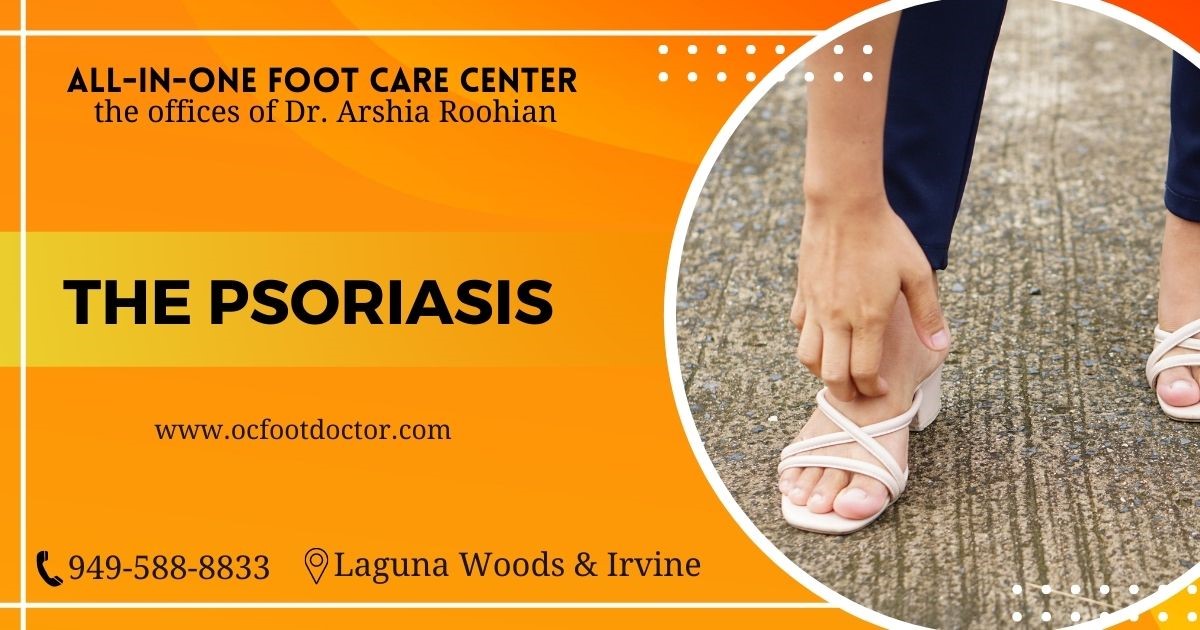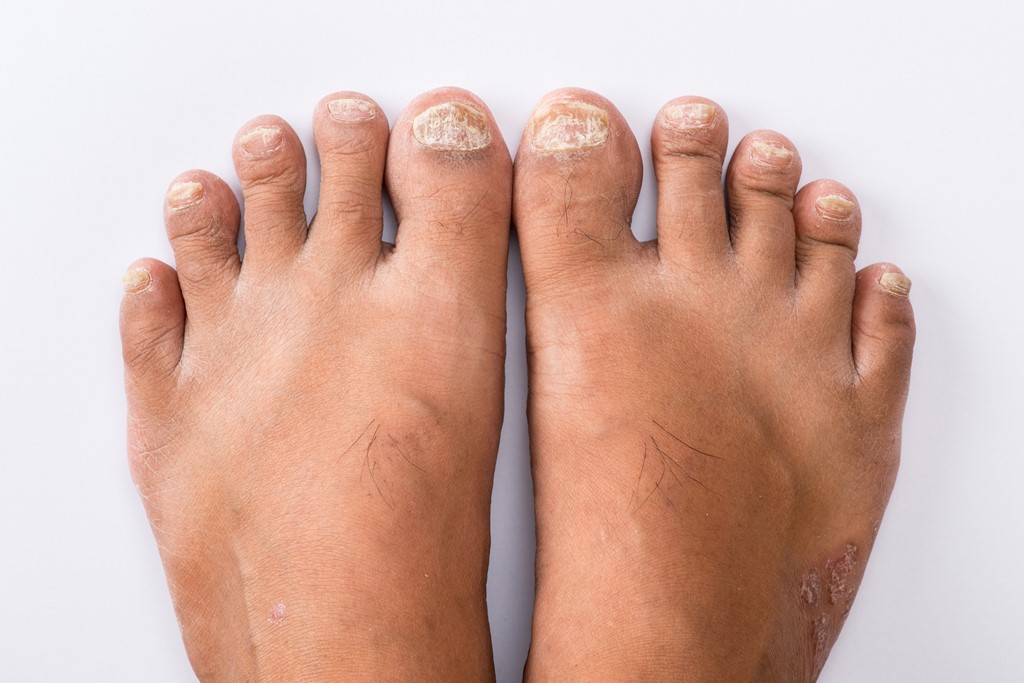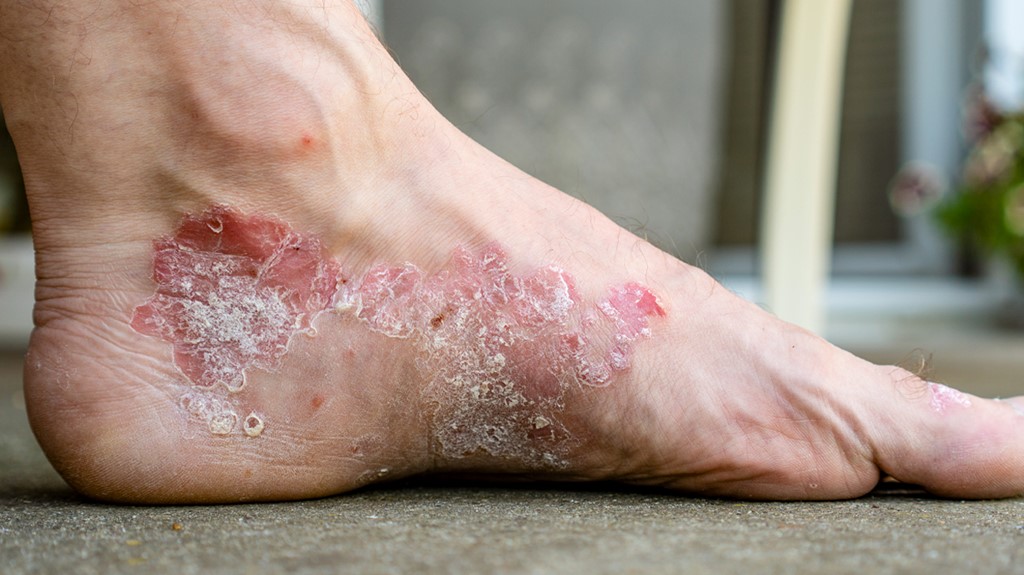The Psoriasis

The most common places on the knees, elbows, trunk, and scalp to develop psoriasis are the knees, elbows, trunk, and scalp.
The disease of psoriasis is common, chronic, and incurable. As a result, pain, sleep disturbances, and difficulty concentrating can occur. There are cycles to the condition, with flares lasting for a few weeks or months, then subsiding for a few weeks or months. Infections, cuts, and burns are common triggers in people with a genetic predisposition to psoriasis.
You can manage symptoms with the help of treatments. Psoriasis can be managed with lifestyle habits and coping strategies.

Signs and Symptoms
Psoriasis signs and symptoms include:
- People with the condition may experience spots of dandruff-like scaling or major eruptions over large areas of their bodies.
- On brown or black skin, the rash tends to be purple with grayscale, while on white skin, it tends to be pink or red with silverscale.
- Children are commonly affected by small scaling spots
- The skin may bleed if it is dry and cracked
- Soreness, itchiness, or burning
-
There is a cycle of flare-ups followed by subsidence of rashes every few weeks or months
There are several types of psoriasis, each with its own symptoms and signs:
- Psoriasis with plaques. Psoriasis plaques are dry, itchy, raised patches of skin covered with scales that are the most prevalent type of psoriasis. Several may be present, or there may be many. Elbows, knees, lower backs, and scalp are usually affected. Depending on the color of the skin, the patches will vary in color. Skin that is brown or black might experience temporary changes in color (post-inflammatory hyperpigmentation).
- Psoriasis of the nails. Fingernails and toenails can be affected by psoriasis, resulting in pitting, abnormal nail growth, and discoloration. In psoriatic nails, the nail bed may separate and loosen (onycholysis). It is possible for the nail to crumble as a result of severe disease.
- The guttate psoriasis. Young adults and children are most commonly affected by guttate psoriasis. Usually, strep throat causes it. The trunk, arms, or legs are covered in small, drop-shaped, scaling spots.
-
Psoriasis inverse. Psoriasis involving the groin, buttocks, and breasts is commonly known as inverse psoriasis. Skin patches become smoother and more inflamed as a result of friction and sweating. This type of psoriasis can be caused by fungus infections.
- Psoriasis pustular. A rare form of psoriasis that causes pus-filled blisters is pustular psoriasis. Patches can cover entire palms or soles or be localized.
- Psoriasis erythrodermic. Erythrodermic psoriasis is a form of psoriasis that causes a peeling rash that can be itchy or burning. Long-term (chronic) or short-term (acute) is possible.

The Best Time To See A Doctor
You should see your health care provider if you suspect you may have psoriasis. You should also seek medical care if you suffer from the following conditions:
- Intensifies or spreads
- Is uncomfortable and painful
- Concerns you about your skin's appearance
- Is not improved by treatment
The Causes
It is thought that psoriasis is caused by an immune system problem that causes skin cells to grow more rapidly than normal. Plaque psoriasis, the most common form of psoriasis, is characterized by dry, scaly patches.
Psoriasis has an unknown cause. Apparently, infection-fighting cells attack healthy skin cells by mistake due to an immune system problem. In addition to genetic factors, environmental factors also play a role. It is not contagious.
Factors That Trigger Psoriasis
The disease may go unnoticed for years in people who are predisposed to it until an environmental factor triggers it. Psoriasis is commonly triggered by:
- Skin infections or strep throat
- Conditions such as cold and dry weather
- Cuts and scrapes, bug bites, and severe sunburn are all examples of skin injuries
- Secondhand smoke exposure and smoking
- Drinking excessive amounts of alcohol
- Medication for high blood pressure, lithium, and antimalarials
- Injectable or oral corticosteroids are abruptly withdrawn
Factors Contributing to Risk
It is possible for anyone to develop psoriasis. Childhood accounts for about a third of all cases. It is possible to develop the disease as a result of these factors:
- The family history. It runs in families. It is more likely for you to develop psoriasis if one of your parents has it. It is even more dangerous if both your parents suffer from psoriasis.
- A smoker. Psoriasis can be made worse by smoking tobacco, as it increases the risk of the disease as well as its severity.
Aspects of Complications
The following conditions are more likely to develop if you have psoriasis:
- A painful, stiff, and swollen joint is caused by psoriatic arthritis
- In the case of healed plaques, there may be temporary changes to the skin color (hypopigmentation or hyperpigmentation)
- Uveitis, blepharitis, and conjunctivitis are examples of eye conditions
- Overweight and obesity
- Diabetes type 2
- Hypertension
- A heart attack or stroke
- The inflammatory bowel disease Crohn's disease, celiac disease, and sclerosis are other autoimmune diseases
- Depression and low self-esteem are mental health conditions
Talk to our experienced podiatrists today. You can contact our office at 949-588-8833 , or visit our website at https://www.ocfootdoctor.com/ Our offices are located in Laguna Hills, Irvine, Mission Viejo, Aliso Viejo, Lake Forest, Foothill Ranch, and Costa Mesa.


